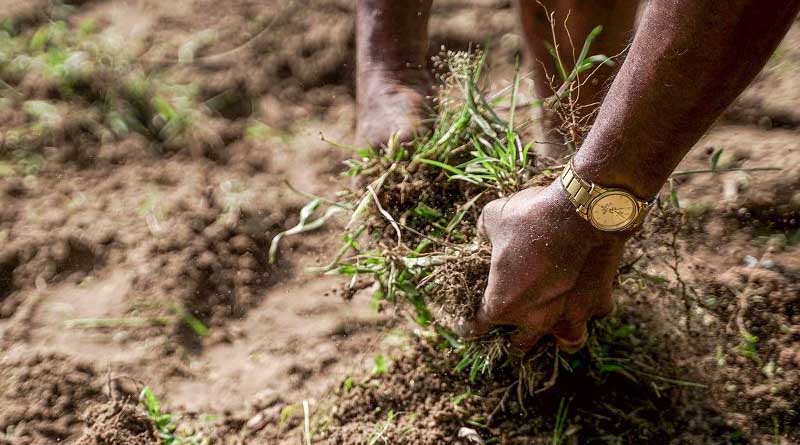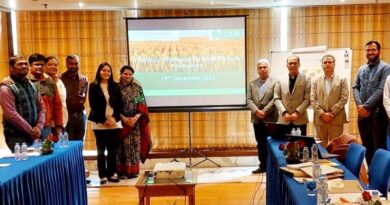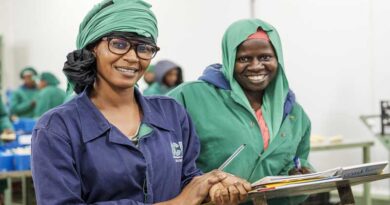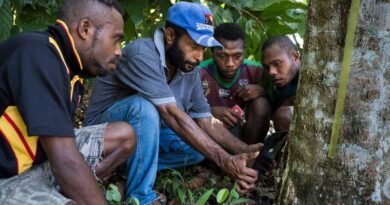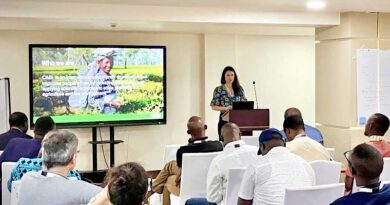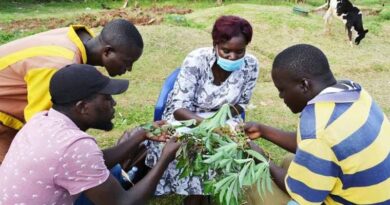CABI review aims to help strengthen national Soil Information Systems around the world
05 October 2023, Africa: CABI scientists are conducting a review of national Soil Information Systems (SIS) in seven countries in Africa – as well as the USA, New Zealand, and Australia to understand key technical factors and the enabling environment that contribute to successful SIS development.
The next stage of the project will involve a deep dive in two countries looking to develop a SIS and co-develop a roadmap for successful SIS development. The final stage of the project will use all the information gathered to develop a replicable framework – including guidelines – for countries looking to develop a SIS.
SISs make soil data available through an online portal, service, or website, and are often assisted by the development of innovative digital soil mapping techniques. They help users by sharing data and information on soil properties and soil health which can then be used to make more informed decisions about agricultural and environmental practices.
SISs are key to improving management of soils
The information provided helps government officials, research organisations, agricultural advisors and farmers understand soil condition, fertility, and nutrient levels. SISs are key to improving management of soils, enabling users to make more environmentally friendly decisions and increase the resilience of food systems.
The work – taking place as part of the project entitled ‘Soil Information Systems Review: a process toward strengthening national soil information systems’ – will lead to the design of a replicable ‘Framework for Intervention’ for SIS development.
Funded by the Bill & Melinda Gates Foundation and working in partnership with ISRIC – World Soil Information, CABI is identifying constraints within countries which stop SIS from being sustainable and adaptable.
Great progress made in past 10 years
The foundation has made great progress in the past 10 years in exploring new and innovative digital soil mapping technologies and national SIS in Africa and South Asia to help organize new and existing soil information.
This study has involved looking at SIS in Ethiopia, Ghana, Lesotho, Rwanda, Tanzania, Zambia, Uganda, New Zealand, Australia, and the USA. The desk study research is being supplemented by interviews with key players in SIS development to understand the process the process of developing a SIS in those countries and understand what has worked, what has not and where future opportunities for SIS development exist.
Such technologies aim to make soil data available to potential users, through an online portal, service, or website, and are often assisted by the development of innovative digital soil mapping techniques.
Ownership of SIS development remains low
Unfortunately, national support, ownership of SIS development, and poor learning from useful insights from other countries persist. Constraints that limit the potential effect of SIS interventions are many, including data quality and standards, data security and privacy, and issues around resourcing and technical infrastructure.
Investments in technologies and data assets have contributed to improving soil health and farmer livelihoods. This is important in adopting digital soil mapping to generate, for example, timely information on how to optimize fertilizer use.
The development and success of such activities can be further improved by involving decision makers and key stakeholders in the design process, resulting in SISs that are more responsive and adaptive to local demand.
SISs need to be sustainable
Dr Martin Parr, Director, Data Policy, and Practice, said it is also important that SISs are sustainable, by being able to continue operating when external support and funding has stopped.
Dr Parr further explained, “CABI’s solution to this is to involve key actors at the review and design phase to ensure technology and systemic factors, as well as potential issues and enablers, are considered.
“Having previously worked on national SIS projects, such as RwaSIS and EthioSIS, CABI understands that there is not a one-fit-for-all technology or approach across countries as each country has specific needs; what we do look for though are generalizable insights into what works.”
Review of SISs and their history
The work CABI is carrying out includes a review of SISs and their history, a review of state-of-the-art technology options for soil and a framework for SIS intervention design and archetypes of SIS profiles with products and services.
The project is also working towards Target Country Roadmaps for a national SIS as well as international soil community engagement and advocacy.
Pascale Bodevin, Project Manager, said, “The emerging findings of both the technical and socio-political research are currently informing the development of SIS archetypes which aim to provide some tangible options of what a functional SIS might look like.
“We aim to learn from the several archetypes that emerge of how both good and poor practices have led to this current state of SIS.”
She said this information will also form the basis for the ‘Framework for Intervention Design’ which will be tested and iterated through engagement with key actors and stakeholders in two countries that are looking to develop a national SIS.
(For Latest Agriculture News & Updates, follow Krishak Jagat on Google News)

